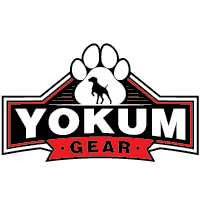As a pet owner, ensuring that your dog has the right equipment is crucial for their comfort, safety, and well-being. One of the most essential pieces of equipment for any dog is a robust harness. A tough dog harness provides better control, reduces strain on your dog's neck, and is often more comfortable for your pet than a traditional collar. This article will guide you through the process of choosing the right tough dog harness for your furry friend.
Why Choose a Tough Dog Harness?
The primary reason for selecting a tough dog harness is durability. A high-quality, durable harness can withstand vigorous activities, including pulling, running, hiking, and even swimming. They are particularly beneficial for large, strong, or energetic dogs that tend to pull or lunge during walks. Additionally, a well-constructed harness distributes pressure more evenly across your dog’s chest and shoulders, minimizing the risk of injury.
Key Features to Consider
When selecting a tough harness, several features are essential to consider to ensure you make the right choice:
Material
The material of the harness significantly affects its durability and comfort. Common materials used include nylon, polyester, and leather. Nylon and polyester are known for their strength and resistance to wear and tear, while leather provides both durability and a classic, stylish look. Ensure the harness material is strong enough to withstand your dog's activity level.
Fit and Adjustability
Proper fit is crucial to prevent discomfort and injury. Measure your dog accurately around the chest and neck to find the right size. A good harness will have multiple points of adjustability to ensure a snug fit. Look for harnesses with adjustable straps to accommodate your dog's growth and fluctuations in weight.
Padded Straps
Padded straps provide extra comfort, particularly for dogs that pull. They help reduce chafing and prevent sores from developing. Ensure the padding is made from breathable materials to prevent overheating, especially in warmer climates.
Secure Fastenings
The buckles and clips should be sturdy and secure. Quick-release buckles are convenient for easy on and off but ensure they are robust enough to prevent accidental openings. Metal buckles usually offer more durability compared to plastic ones.
Front and Back Attachment Points
Dual attachment points increase versatility. A front attachment point can help reduce pulling and offer better control for training, while a back attachment point is useful for everyday walks and activities. Some harnesses also come with a handle on the back, which can be useful for assisting your dog over obstacles or providing extra control in challenging situations.
Reflective Features
For walks during low-light conditions, reflective strips or stitching can enhance visibility and safety. This is particularly important if you walk your dog early in the morning or late at night.
Choosing the Right Style
Tough dog harnesses come in various styles, each designed to suit different needs. Here are a few popular types:
Vest Harnesses
Vest harnesses provide excellent support and are usually padded for added comfort. They’re ideal for dogs that need more coverage or have sensitive skin. These harnesses often distribute pressure evenly and are suitable for dogs of all sizes.
Step-in Harnesses
Step-in harnesses are easy to put on and take off, making them a good choice for fidgety dogs. They offer decent control and tend to be comfortable and secure.
Front-Clip Harnesses
These harnesses have a leash attachment point on the chest, helping to reduce pulling by turning the dog towards you when they try to lunge forward. They're great for training and improving leash manners.
Back-Clip Harnesses
With a leash attachment on the back, these harnesses are suitable for well-behaved dogs that don't pull excessively. They're comfortable and easy to use for everyday walks.
Conclusion
Choosing the right tough dog harness involves considering various factors, including material, fit, adjustability, padding, secure fastenings, attachment points, and reflective features. By carefully evaluating these aspects, you can ensure that your dog's harness is both durable and comfortable, providing them with the support they need for their active lifestyle. Remember to regularly check the harness for signs of wear and replace it as needed to maintain its effectiveness and your dog's safety.

